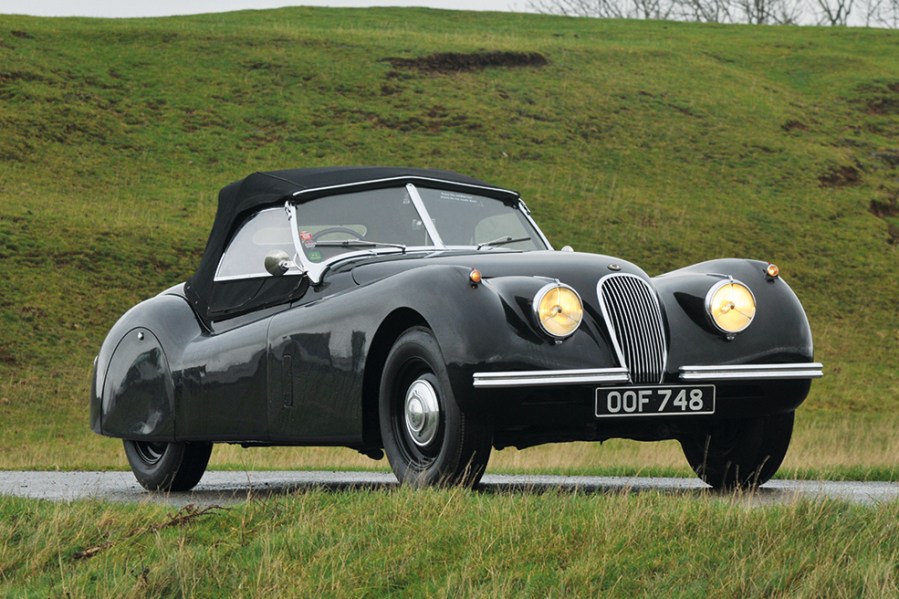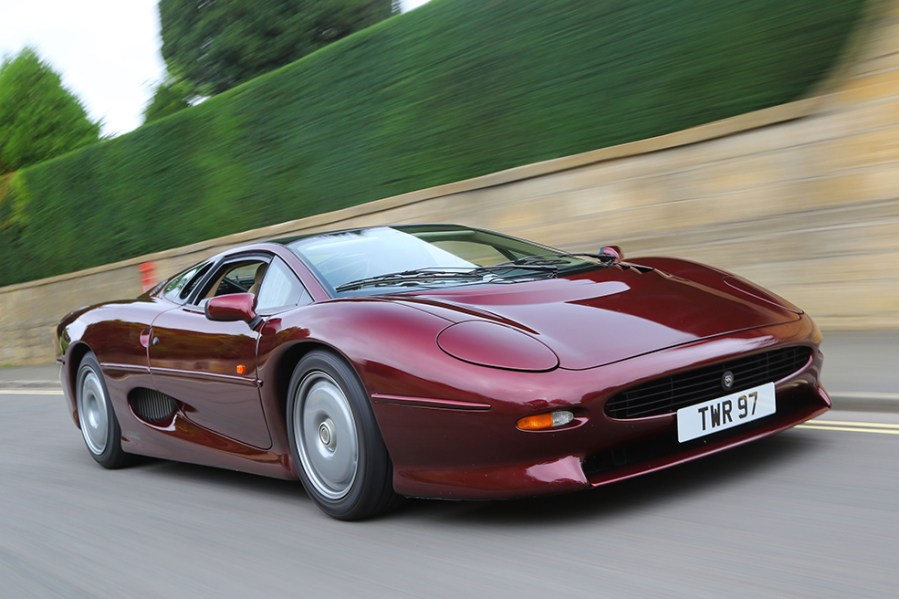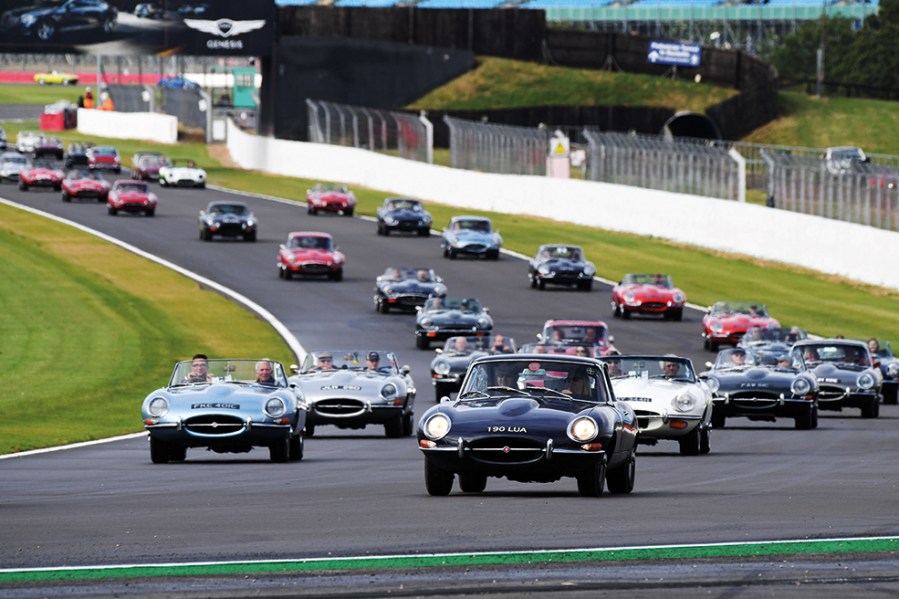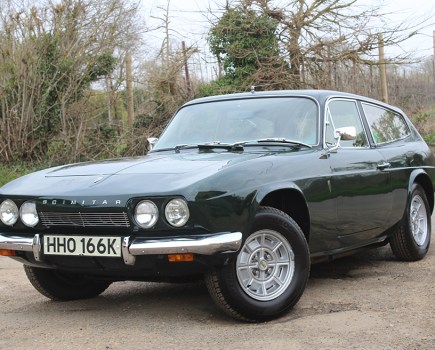As Jaguar celebrates its centenary in 2022, we take a whistle-stop tour of its greatest cars
Words: Sam Skelton
Jaguar is one of those brands that everybody in the classic car world seems to love. And there have been scores of historic models too, ranging from the bank robber’s favourite Mk2 to the XJ line, the raffish XK120 to the game-changing E-type and the grand touring XJ-S. And over time, Jaguar has repeatedly changed its remit – from sporting saloons to luxury lines, a wide range to a narrow one, mid market to top of the line. Many of its most iconic models have been cars which heralded changes in direction for the company.
And each and every one makes for an excellent classic buy today. Whether you want a modern classic for daily duties or something special for Saturday sauntering, you’ll find a car for you with the leaping cat atop its grille. We’ve picked out our favourite models from a brand which has always had our hearts.

Jaguar XK120
While the SS Jaguars of the pre war days might have been the first to bear the name, the brand really kick started with this car – the XK120 of 1948. It was a testbed for Jaguar’s new 3.4 litre six cylinder engine – a car in which it could be trialled before it was fitted to the company’s bread and butter models. And with 160bhp at launch, it was quick – enough to propel the car to 120mph, and even faster in tuned and aerodynamically tweaked specification on the Jabbeke Highway. 132mph was impressive in an era when your average family saloon was lucky to hit 60, and ensured that the Jaguar had a litany of fans from day one.
Its reign lasted too, courtesy of facelifted and more powerful successors. Jaguar expanded the XK120 range with a coupe for 1952 and a drophead for 1953. 1954 saw the launch of the more powerful XK140, while 1957 saw that car replaced with the XK150. Throughout, engines became more powerful and the three model range was retained. It was only the launch of the E-type in 1961 that meant that Jaguar’s XK range was given the chance to rest – with total sales of 30,381 over its 13-year life.
Today, almost all parts are available, though while it’s tempting to restore one of these cars it’s often financially better to buy a good example in the first place. With prices comfortably into six figures, we’d strongly recommend you seek specialist advice on particular examples before buying.
Jaguar E-type
One of the few sporting jaguars whose reputation even approached that of the mighty XKs is that of the E-type of 1961. Styled by aerodynamicist Malcolm Sayer and strongly influenced by the Le Mans winning D Types of the 1950s, it took the 3.8-litre XK engine and slotted it beneath a body so revolutionary in appearance it took the motoring word by storm. Not only that, but it was excellent value and astoundingly quick – for an idea of the impact in 2022, imagine a Bugatti Chiron-beating supercar for under £100,000.
Unsurprisingly, the waiting lists began on the first day of the Geneva Motor Show, where two prototypes were used to offer test rides in the surrounding region and where celebrities famously attempted to jump the queue. The E-type softened over the years – first with the 2+2 model, then the Series 2, and finally the portly Series 3 of 1971 with its V12 engine and oft-specified automatic gearbox.
Today, these are the best value Es, though everything is relative. You’ll still need around £50,000 to get hold of a V12 coupe, and any Series 1 worth having will be north of £100,000 today. E-types were built to a price and they rot for fun, so we’d only advise you look at cars where there’s a proven history and where there has been considerable restoration in the past.

Jaguar Mk2
If your name was Flash Herbert, or Knuckles, chances are you spent much of the 1960s in a speeding Mk2 of some sort or another. Whether on your way to the job or on your way to the nick, the Mk2’s combination of space and pace endeared it both to the criminals and to the police. It earned itself a reputation, and while Jaguar might have hoped bank managers would take to the car it soon slipped out of salubrious society and into a very different class of clientele. Inspector Morse went some way toward repairing the image problem, though, and today the Mk2 is held in high esteem – a sign you’ve got taste, a little bit in the bank, and like the finer things in life.
But they were built to a price just like the E-type, and so care needs to be taken when it comes to purchase. Like the E, they can rot just about everywhere, but pay attention to the lower extremities first of all, and to the front wings – they’re large, complex panels and are not cheap to replace. The 3.8s are fetching silly money right now, but the 3.4s offer very nearly the same performance for a smaller outlay. If you’re not too fussed by the bigger bumpers, late model 240 and 340s offer improved performance and better value.

Jaguar XJ Series 1
Jaguar’s 1960s saloon car range was confusing. There was the Mk2, then there was the S-Type, which had been designed to replace the Mk2 but was instead launched as a more upmarket model. Then there was the Mk10, a large land yacht for Kray twins and bank managers. Finally there was the 420, which looked like a Mk10 and used the same engine, but in a body based on that of the S-Type, which stayed in production. The Mk2 was cheapened into 240 and 340 models, which sat alongside the S-Type, 420, and renamed Mk10 that was the 420G. Confused? Everyone was.
In 1968, though, Jaguar replaced the lot with a single model family, the XJ6. Closest in size and concept to the 420, it offered a large and comfortable saloon with a choice of 2.8 and 4.2 litre sixes, and from 1972, a V12 to boot. The XJ would receive facelifts for 1973 and 1979, would be replaced in six-cylinder form in 1986, and finally discontinued in V12 form in 1992.
Today, it’s one of the fastest rising investments in the classic Jaguar scene, and if you can find an early 4.2 manual you’re sitting on gold dust. XJs can and do rust, but most of the parts are there to revive a shabby example. It’ll not be as cost effective as buying a good one, though, so buy the very best example you can afford.
Jaguar XJ-S
The Jaguar XJ-S is truly a product of the 1970s. When the E-type evolved into its third iteration, it lost both the beauty and the sporting potential that had made it such a household name. It had become a soft GT – and while Jaguar felts that this was an apt direction, it chose to develop its next sporting model as a grand tourer from the start. The XJ-S is based on the underpinnings of the XJ12 saloon, shortened and clothed in a body by Malcolm Sayer targeted at aerodynamic style.
Pitted when new against cars like the Jensen Interceptor, those early models had no wooden trim, and period unusually-shaped dials in place of the traditional round units.
Wood made a comeback for the 1980s though, with the XJ-S HE, or High Efficiency – soon followed by the 3.6. A targa style convertible was introduced for 1983, while a full convertible joined the range in 1988.
Jaguar facelifted the XJ-S for 1991, renaming it the XJS in the process. New side windows, softer lines and a rear light setup inspired by the XJ40 were used, while the six cylinder engines were increased from 3.6 to 4.0.
The V12 would follow by 1993, with an increase from 5.3 to 6.0. XJS’s rust just as badly as the XJs upon which they’re based, while there are also known electrical issues with the model. But many of the problems can be fixed today, and an XJ-S or XJS needn’t be an unreliable classic. With values rapidly rising to the level we once saw E-types at, they’re ripe for investment too. A six cylinder makes a better regular use car, but an early V12 makes the best investment at present.

Jaguar XJ220
The XJ220 was a product of the hypercar race of the late 1980s – the challenge to produce the world’s fastest road car. The concept was presented in 1988 with all wheel drive and a V12 engine, and scores of buyers left deposits of £57,000 each. By the time the car was production ready it sported half the cylinders and rear wheel drive, albeit with a brace of turbochargers. The engine was that from the MG Metro 6R4 group B rally car, while the production specification had been simplified to make the car cheaper to build. Hypercars like this were deemed profligate in a recession, and Jaguar simply didn’t have the money to build the car that was promised.
Not that the customers had the money to pay for it, as the stock market imploded after the inflationary 1980s. Having already waited four years for their cars, they attempted to back out of the deals and retrieve their deposits – Jaguar ended up taking them to court to force them to complete purchase.
Unsurprisingly, few new customers signed up for the £470,000 asking price – and in 1997, Jaguar was forced to sell the last 22 off for just £150,000. The Jag had been the fastest car in the world for a matter of months, until McLaren brought out the F1. And for a long time they were undrivable, as tyres weren’t available. But now that’s changed, and Jaguar has special facilities in Coventry for maintaining these hypercars. Unsurprisingly they’re not cheap, at around £350,000 today – but if you have the money, it’s one hell of a car to own.
Jaguar XK8
After Aston Martin borrowed a cast-off concept to replace the XJ-S and branded it the DB7, Jaguar needed to rethink its plan. And, as is typical for a sporting Jag, it previewed a new engine. The XK120 was first with the XK, the E-Type got the V12 ahead of the saloons, the XJ-S got the AJ6 and now the AJ-V8 would first be seen in a sporting model too. This new engine was available in 4.0 and supercharged variants, replacing the 4.0 six and the V12 with one engine family. Both were coupled to five speed automatic gearboxes, and a body which made the Aston Martin DB7 look a little staid.
A facelift in 2003 brought six speed gearboxes, 4.2-litre V8s and bigger wheels to the party, but the early cars are purer in spirit. Both coupe and convertible variants are available – both in XK8 and supercharged XKR form. Best value right now are the early 4.0 Coupes, which can be had for under £5000 if you’re prepared to accept a car that needs a little work.
But spend double that and you could get yourself a decent convertible or XKR, and these cars are the ones which will prove to be the better long term investments. They can rust, and early ones did have issues with plastic timing chain tensioners and Nikasil cylinder bore coatings, but if they’re still around today the odds are that both issues will have been dealt with. These cars will not stay this cheap forever.
Jaguar S-Type
The S-Type wasn’t a particularly big hit when it was first launched. The retro design touched looked heavy handed, it used parts bin architecture courtesy of Lincoln, and the interior was rather too Stateside for our tastes. But as the years passed, the S-Type matured into a reasonably good modern classic. It’s always been quick and comfortable, and following the first facelift the new interior and grille meant that it was a reasonably attractive car to boot. The launch of the BMW E60 5-series and Mercedes W211 E-class helped too; against both, the Jaguar now looked discreet and tasteful.
Pick the V6 for common sense or the V8 for speed – with the fearsome S-Type R for those who need to arrive before they’ve left. But the real secret of the range is the diesel. The 2.7 litre uit is shared with the XJ, and through impressive power and torque was famously used by Jeremy Clarkson to set a sub ten minute time at the Nürburgring (Later eclipsed by the late Sabine Schmitz). And it can do all this while averaging mid thirties in typical day to day driving and over 40mpg on a run.
Best bit? They’re a bargain, and that can’t last. Under £2000 will buy you a tidy diesel, while early 3.0s can be had for under a grand if you know where to look. Buy one while you can at this money, because they will start to appreciate soon.
Jaguar X-Type
Let’s get the jokes out of the way at the top. It’s a Mondeo in drag. Ha ha. But if you believe that the earth is flat and the moon is made of cheese, then we’ll humour you. The fact is, the Mondeo architecture really isn’t a bad basis for a car. And there’s far more Skoda Octavia lurking under an Audi A3 than there is Ford in the Jag.
The thing is, despite the bar room know-alls the X-type isn’t actually a bad car. We’ve run a number of them, and found them to be comfortable, reliable, and entertaining transport – especially in manual box, AWD, V6 flavour. The X-Type expanded Jaguar’s horizons downwards, into the BMW 3-series’ territory – and broadened the marque’s portfolio by offering its first production estate and diesel models.
While a cloth-trimmed manual diesel front wheel drive estate car was anathema to Jaguar’s traditional customers, it certainly helped bring the money in, and made Jaguar a viable option on many fleet lists.
What it didn’t do, sadly, was lower the age demographic of the average Jaguar buyer. Younger fleet drivers stuck to BMW, Audi and Mercedes, leaving the Jaguar as a slower selling model aimed at families and the older fleet user. But what didn’t work when the cars were new makes them more separate today as classics; they offer a traditional Jaguar ambience with an excellent chassis and real world running costs. And they’re cheap – you can get hold of a reasonable example for under £1000 today.
Jaguar XJ X350
The Jaguar X350 might look like every XJ which came before, but under the skin it was a very different machine. Some 40% lighter and 60% stiffer than the old model through its use of aluminium, it used a larger variant of the V8 and the V6 as both seen in the smaller S-type range. The traditional look was still there inside and out, but the X350 was rammed with technology both during the design process and as supplied to the customer in order to make it the most advanced single step for the XJ to date. Launched at the 2002 Paris Motor Show with a display of a polished aluminium example, the X350 would be produced to 2007. Its replacement, the X358, was a heavy facelift intended to tide the car over until the launch of the X351 in 2010.
That aluminium shell means they’re far easier on the wallet than older Jags too – even the 4.2 litre V8 can average 30mpg in the right hands, and cruise in the mid thirties on the motorway. The 3.0 V6 is even more parsimonious, to say nothing of the excellent 2.7 litre diesel option.
They can suffer aluminium corrosion, and galvanic corrosion where aluminium and steel parts meet. Air suspension systems can pose difficulties, but in terms of engine and drivetrain they’re reasonably reliable. And the market has never been cheaper for the X350 – now is certainly a good time to buy.







